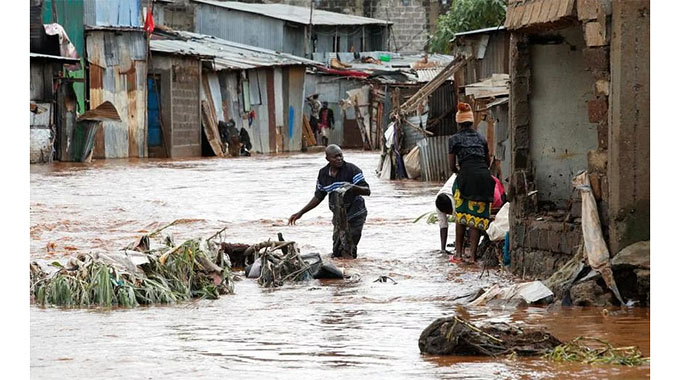New protected area buffers Mauritania’s shifting sands

Mauritania’s battle against encroaching desertification, which has damaged ecosystems and endangered species, has received a timely boost with the news that 200,000 hectares will be turned into a protected area to support biodiversity in the country.
The new project, implemented by the United Nations Environment Programme (UNEP) and supported by the Global Environment Facility (GEF), will create a new protected area in the district of Adrar, a former crossroads for medieval salt and date traders, known for its striking desert landscapes and UNESCO-listed fortified towns of Chinguetti and Oudane.
This latest initiative will complement the Great Green Wall, a pan-African initiative stretching 8,000 kilometres across 11 countries, including Mauritania. The Great Green Wall, which is the first flagship of the UN Decade on Ecosystem Restoration, will combat desertification and drought with the planting of new trees to restore degraded land – in total over 100 million hectares will be restored. The restored land is expected to sequester 250 million tons of carbon and create 10 million new green jobs.
“As we enter the UN Decade on Ecosystem Restoration, projects like this in Mauritania are key to fighting climate change and meeting the Sustainable Development Goals,” said Doreen Robinson, Head of Biodiversity at Land at UNEP. “While restoration projects aren’t quick fixes, they bring real sustainable change, provide jobs and help battle climate change.”
The new protected area will provide a corridor of conservation that will link El Ghallâouîya Key Biodiversity Area with the Guelb Er Richat Nature reserve in central Mauritania. Experts say the 200,000-hectare restoration in Adrar, is a crucial step for an area beset by climate change.
“This development is significant not only for conserving Mauritania’s biodiversity with a substantial increase in the coverage of national terrestrial protected areas but also for our indigenous nomadic communities who face relentless food and nutrition crises caused by climate change and low agricultural productivity,” said Mohamed Yahya Ould Lafdal, the Mauritanian government’s Technical Adviser for Cooperation and Partnership and GEF Operational Focal Point.
“This project also represents an achievement in the environmental governance and ecological restoration of the northern hyper drylands of Mauritania, and is expected to boost several indicators that have been set up in the context of the UN Convention on Biodiversity,” he added.
Globally much progress has been made to protect and conserve land, but much still needs to be done. UNEP’s Protected Planet Report, a biennial publication that provides a status update against the Aichi Biodiversity Target 11, shows that since 2010, 22.5 million km2 (16.64 per cent) of land and inland water ecosystems and 28.1 million km2 (7.74 per cent) of coastal waters and the ocean are within documented protected and conserved areas. This is an increase of over 21 km2 (42 per cent). However, work still needs to be done as less than 8 per cent of land is both protected and connected.
As we enter the UN Decade on Ecosystem Restoration projects like this in Mauritania are key to fighting climate change and meeting the Sustainable Development Goals.
Doreen Robinson, Head of Biodiversity at Land at UNEP
Eye of the Sahara
Guelb er Richat – or “Eye of the Sahara” – is a distinctive land mass, with concentric circles of blue and gold, was once mistakenly thought to be the impact crater of a meteorite but is now believed to be the remains of an eroded magma dome. It holds significant cultural, geological and environmental importance both nationally and globally. It is also a safe haven for various animals, including the mouflon, a type of bighorn sheep and several other IUCN Red list species, such as the addax and dama gazelle, both critically endangered – and the vulnerable dorcas gazelle.
El Ghallâouîya, situated at the other end of the proposed new protected area, is a permanent water source relied upon both by nomadic herders and large numbers of birds and animals, many of them vulnerable, that need water to thrive.
“The fantastic leadership demonstrated by the Mauritanian government in working with UNEP and the GEF to develop these arid and sadly neglected areas will have huge benefits for people and the environment,” said Adamou Bouhari, Task Manager for the project.
The Adrar Protected Area is being created under the Integrated Management of Protected Areas in the Arid Regions of Mauritania (IMPADRA) project. To learn more about IMPADRA and UNEP’s work in Biodiversity and Land Degradation, contact [email protected].
The UN Decade on Ecosystem Restoration 2021–2030, led by the UN Environment Programme, the Food and Agriculture Organization of the United Nations and partners such as the Africa Restoration 100 initiative, the Global Landscapes Forum and the International Union for the Conservation of Nature, covers terrestrial as well as coastal and marine ecosystems. A global call to action, it will draw together political support, scientific research and financial muscle to massively scale up restoration. Help us shape the Decade.
Distributed by APO Group on behalf of United Nations Environment Programme (UNEP).









Comments